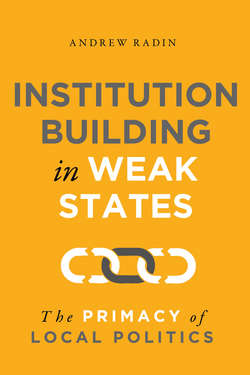Читать книгу Institution Building in Weak States - Andrew Radin - Страница 18
CHAPTER TWO The DOMESTIC OPPOSITION THEORY and ALTERNATIVE THEORIES
ОглавлениеIn 2008 I made my first field research trip to Bosnia and Herzegovina (Bosnia, or BiH). The postwar mission in Bosnia had begun in 1995, and by the time I arrived the international community had pursued a wide range of efforts to help build peace, strengthen state institutions, and encourage the development of a multiethnic society. Some of the most well-resourced efforts to remake the country had achieved little, such as a police restructuring effort (see chapter 5). More practical, incremental efforts that avoided core political interests had the most success, such as the creation of a value added tax and a defense-reform effort (see chapter 4).
Bosnia was my first observation of the dynamic I would later observe firsthand in Ukraine. On one hand, foreign reformers must advocate for changes to correct the problems they observe, or else those problems will persist. On the other hand, any changes they seek have consequences for elites leading the government, the officials working within an institution, and the broader population of the society. Reforms of state institutions are inherently political, even if foreign actors may claim that they are pursuing only technical changes. Threatening core interests can provoke domestic opposition that makes a reform effort less successful than it might have been if the reformer had asked for less in the first place. International resources and preexisting institutions did set the context for reform, but the occurrence or absence of domestic opposition typically proved more important.
To understand the dynamics I observed in Bosnia, I developed a domestic opposition theory to understand when and how domestic actors can oppose reform. I also used the literature to derive competing predictions about how international resources and path dependence shape reform. This chapter presents the hypotheses of these theories, which I draw on in the case studies in chapters 3 through 6. I first present a framework for dividing reform efforts into multiple stages for analysis. Then I explore the origins of foreign demands and recommendations. The next three sections lay out the domestic opposition theory, considering in turn nationalist goals, patron-client networks, and reforms that threaten both interests or neither interest. The final sections of the chapter detail the alternative theories, on international resources and path dependence.
